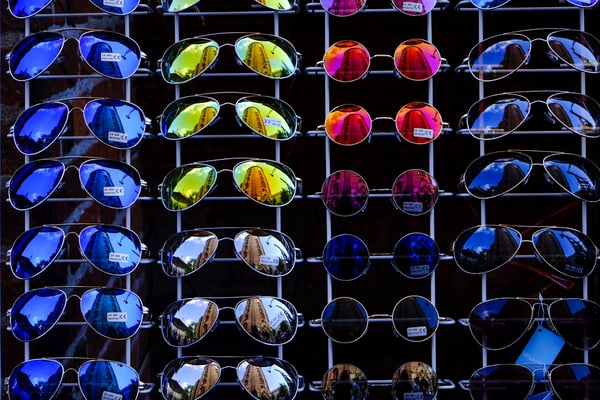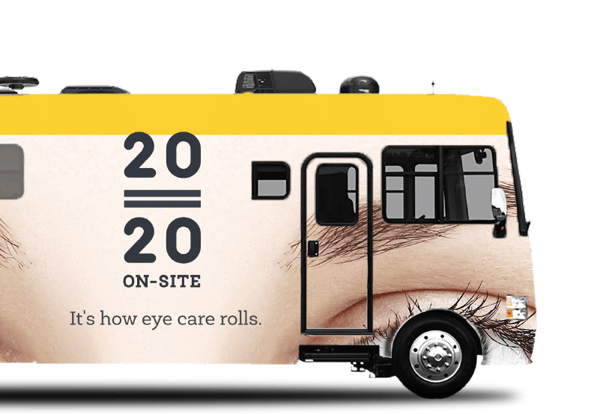The recommended frequency for eye exams in adults is every year, or every two years if your insurance doesn’t cover a yearly exam. Here’s what to expect during your visit.

If you're seeing a new eye doctor or if you're having your first eye exam, expect questions about your vision history. Your answers help your eye doctor understand your risk of eye disease and vision problems. Be prepared to give specific information, including:
- Are you having any eye problems now?
- Have you had any eye problems in the past?
- Were you born prematurely?
- Do you wear glasses or contacts now? If so, are you satisfied with them?
- What health problems have you had in recent years?
- Are you taking any medications?
- Do you have any allergies to medications, food or other substances?
- Have you ever had eye surgery?
- Does anyone in your family have eye problems, such as macular degeneration or glaucoma?
- Do you or does anyone in your family have diabetes, high blood pressure, heart disease or any other health problems that can affect the whole body?
If you wear contact lenses or glasses, bring them to your appointment. Your eye doctor will want to make sure your prescription is the best one for you. Also be prepared to remove your contacts or glasses during the exam. Tests that use dye (fluorescein) to temporarily color your eyes may permanently discolor your contact lenses, so you'll be asked to remove them for those tests.

If your eyes are dilated as a part of your eye exam, you may want to bring sunglasses to wear after your eye exam is complete, as daylight or other bright lights may be uncomfortable or cause blurred vision. Also, if you still drive to your eye doctor, consider having someone else drive you home. The discomfort and blurred vision will take a few hours to go away.
An eye exam usually involves these steps:
- You'll be asked about your medical history and any vision problems you might be experiencing.
- Your eye doctor measures your visual acuity to see if you need glasses or contact lenses to improve your vision.
- The doctor will measure your eye pressure. This is either done with a puff of air blasted into your eye or using numbing drops and pressing a pressure measurement object against your eyes.
- Your eye doctor checks the health of your eyes, possibly using several lights to evaluate the front of the eye and inside of each eye. To make it easier for your doctor to examine the inside of your eye, he or she will take a high definition picture of the back of your eye or dilate your eyes with eyedrops.
- Your eye doctor discusses what he or she found during the exam and answers questions you have about your eyes.
Several different tests may be performed during the eye exam. The tests are designed to check your vision and to examine the appearance and function of all parts of your eyes. This may seem like a long list, but the exam generally takes only about 20 minutes.
Eye muscle test
This test evaluates the muscles that control eye movement. Your eye doctor watches your eye movements as you follow a moving object, such as a pen or small light, with your eyes. He or she looks for muscle weakness, poor control or poor coordination.
Visual acuity test
This test measures how clearly you see. Your doctor asks you to identify different letters of the alphabet printed on a chart or a screen positioned some distance away. The lines of type get smaller as you move down the chart. Each eye is tested separately. Your near vision also may be tested, using a card with letters similar to the distant eye. The card is held at reading distance.
Refraction assessment
Light waves are bent as they pass through your cornea and lens. If light rays don't focus perfectly on the back of your eye, you have a "refractive error." This is more commonly known as nearsightedness or farsightedness.
Having a refractive error probably means you need some form of correction, such as glasses or contact lenses to see as clearly as possible. Assessment of your refractive error helps your doctor determine a lens prescription that will give you the sharpest, most comfortable vision. The assessment may also determine that you don't need corrective lenses.
Your eye doctor usually fine-tunes this refraction assessment by having you look through a mask-like device that contains wheels of different lenses (phoropter). He or she asks you to judge which combination of lenses gives you the sharpest vision.

Visual field test
Your visual field is the full extent of what you can see to the sides (your peripheral vision) without moving your eyes. The visual field test determines whether you have difficulty seeing in any areas of your overall field of vision. If you aren't able to see in certain areas, noting the pattern of your visual field loss may help your eye doctor diagnose your eye condition.

Color vision testing
You could have poor color vision and not even realize it. Your eye doctor will screen your vision for a color deficiency. To do this, your doctor shows you several multi-colored dot-pattern tests. If you have no color deficiency, you'll be able to pick out numbers and shapes from within the dot patterns. If you do have a color deficiency, you'll find it difficult to see certain patterns within the dots.
Slit-lamp examination
A slit lamp is a microscope that magnifies and illuminates the front of your eye with an intense line of light. Your doctor uses this device to examine the eyelids, lashes, cornea, iris, lens and fluid chamber between your cornea and iris.
Retinal examination
A retinal examination allows your doctor to evaluate the back of your eye, including the retina, the optic disk and the underlying layer of blood vessels that nourish the retina.
Screening for glaucoma
This test measures the fluid pressure inside your eye (intraocular pressure). It helps your eye doctor detect glaucoma, a disease that damages the optic nerve.
Results
At the end of your eye exam, you and your doctor will discuss the results of all testing, including an assessment of your vision, your risk of eye disease and preventive measures you can take to protect your eyesight.

Normal results from an eye exam include:
- 20/20 vision
- Good peripheral vision
- Ability to distinguish various colors
- Normal-appearing structures of the external eye
- Absence of cataract, glaucoma or retinal disorders, such as macular degeneration
Of course, many people will have some kind of eye issue--most commonly, the need for glasses. If so, your doctor will give you a prescription for corrective lenses. If your eye exam comes up with any other abnormal results, which are more common with aging, your doctor will discuss with you next steps for further testing or for treating your condition.
If you have questions about any diagnosed eye or vision conditions or treatment recommendations, don't hesitate to ask your doctor for additional information or explanation. You can even call later if questions come up after you’ve left the office.

Here at 2020 On-site, we bring vision testing right to your workplace. To find out more about the 2020 patient experience, take a look at our short patient video. 97% of our patients would recommend us to their friends and colleagues!

And then ask your HR benefits administrator about having us come to your office--we’ll save you time, and your company will save money. Contact Us if you have questions about the 2020 On-site experience. We’re happy to talk with you anytime.


